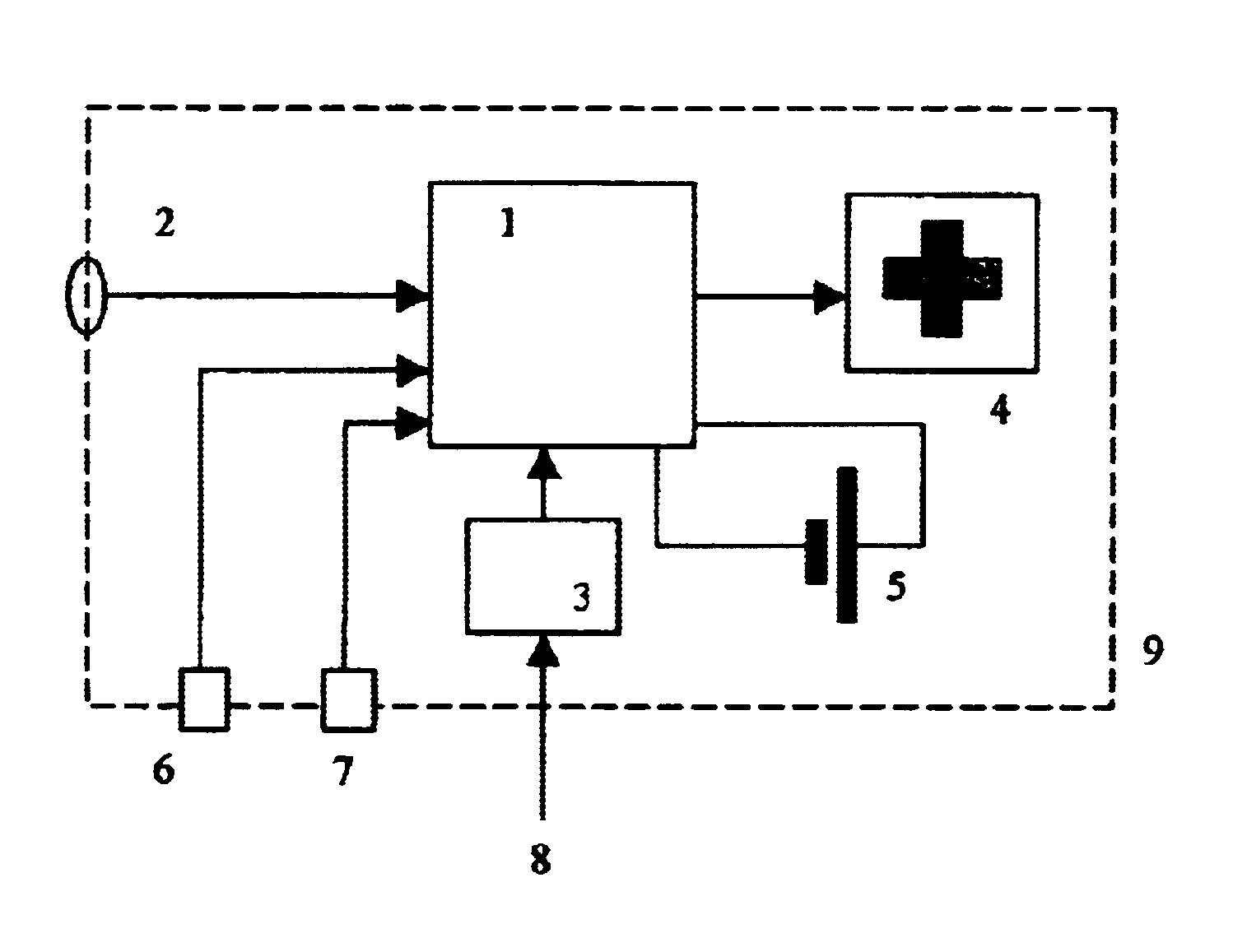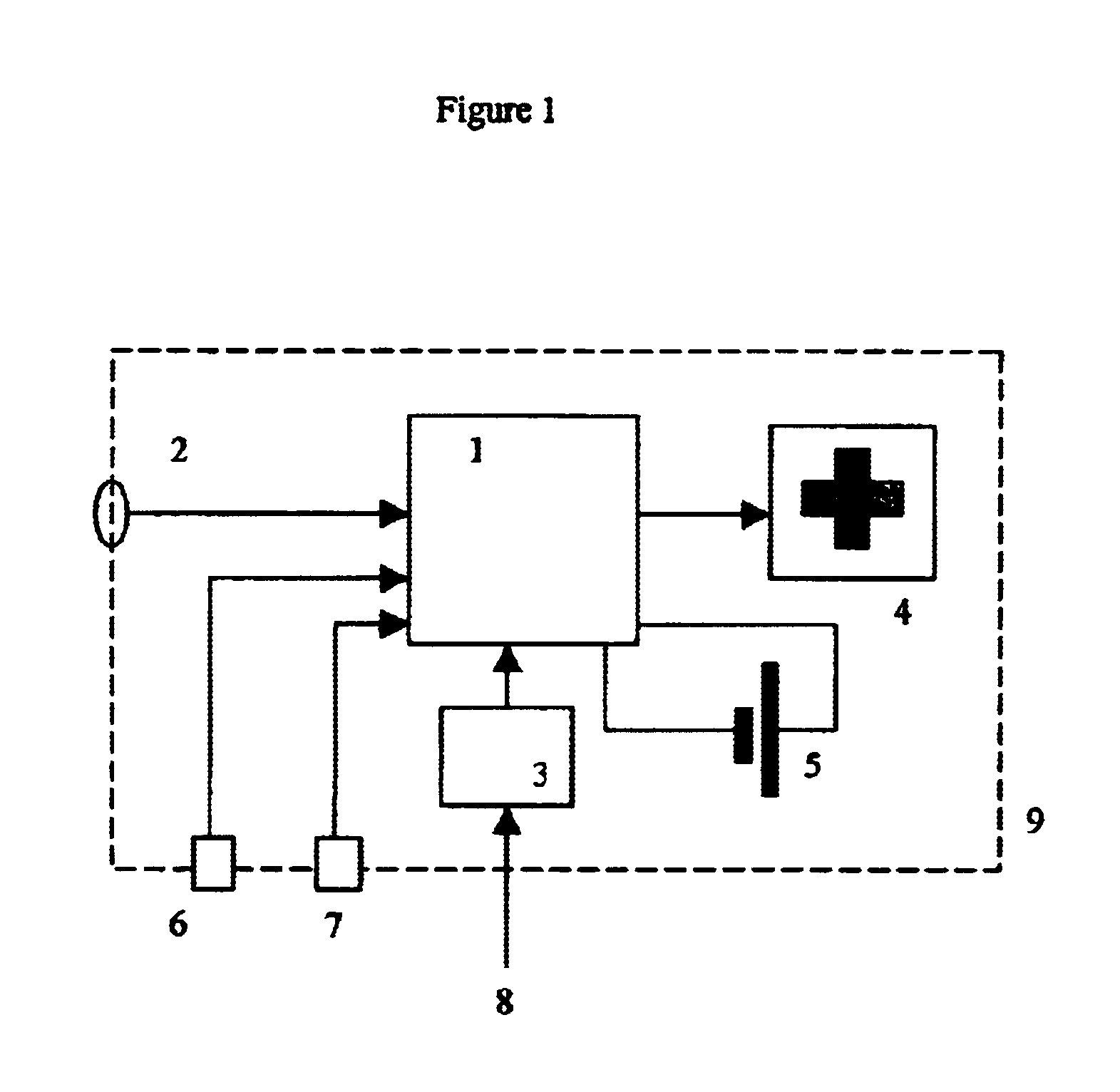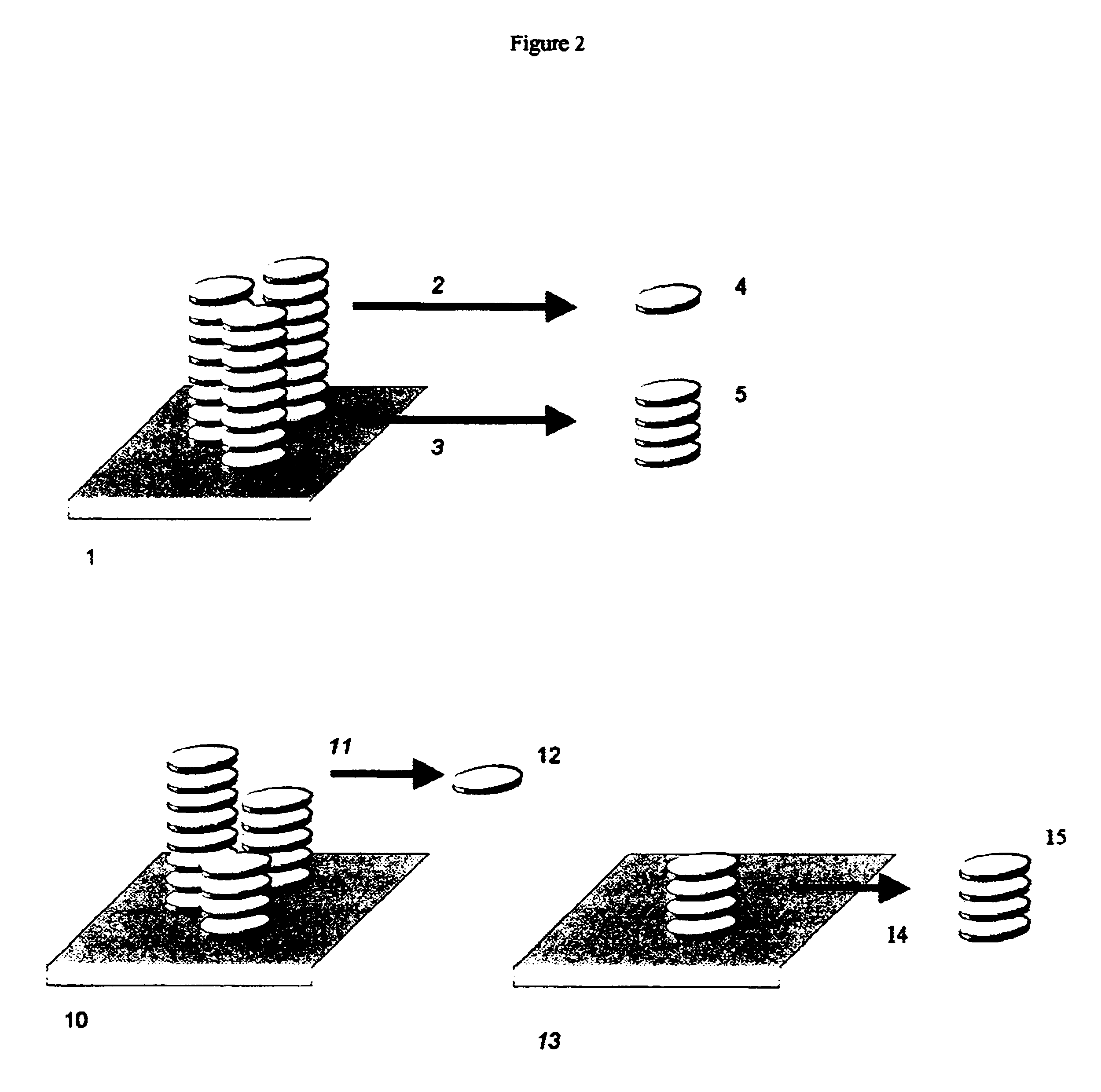Electronic time-temperature indicator
a technology of time-temperature indicators and indicators, which is applied in the direction of heat measurement, fire alarms, instruments, etc., can solve the problems of low stability of materials that deteriorate quickly in response to higher temperatures, and have a tendency to deteriorate, so as to achieve easy and precise customization, simple visual output, and instant assessment of material fitness.
- Summary
- Abstract
- Description
- Claims
- Application Information
AI Technical Summary
Benefits of technology
Problems solved by technology
Method used
Image
Examples
example 1
Insulin Time Temperature Monitor
[0120]In order to properly configure the device, the stability of the material of interest should first be characterized. To do this, quantitative “maximum acceptable deterioration” criteria, should be established, and used to determine the material's stability lifetime when the material is stored at a variety of different temperatures. The stability lifetime at the various experimental temperature levels is then determined, and used as input into the stability programming calculations.
[0121]Using the experimental data, a curve or equation is then generated that fits the observed data. This curve is used to calculate the stability lifetime at intermediate temperatures.
[0122]As an example, consider a commonly used injectable drug, insulin. Insulin is commonly carried by traveling diabetics, but will deteriorate if exposed to excessive levels of temperature for too long. The work of Brange et. al. ‘Galenics of Insulin’ [Novo Research Institute, Denmark]...
example 2
Other Drug Monitoring Applications
[0159]There are a number of medically important antibiotics, such as the P-Lactam antibiotics (which include Ceftazidime, Cefepime, Imipenem, Meropenem, Cefpirome, and others), which would be most effective if the drugs could be administered by continuous infusion to ambulatory patients. Such continuously infused antibiotics would be highly useful for treating cystic fibrosis, immunocompromised chemotherapy patients (who are at risk for sepsis), and many other conditions.
[0160]However due to the poor thermal stability of the β-Lactam antibiotics, current continuous infusion pump (either mechanical or elastomeric) technology is inadequate. In the liquid form, many of the β-Lactam drugs deteriorate after only a few hours of exposure to temperatures above 25° C. Since body temperature is 37° C., conventional ambulatory infusion pumps, which usually are worn underneath clothing, typically expose such drugs to unacceptable levels of thermal stress.
[0161]...
PUM
| Property | Measurement | Unit |
|---|---|---|
| temperature | aaaaa | aaaaa |
| time resolution | aaaaa | aaaaa |
| temperature resolution | aaaaa | aaaaa |
Abstract
Description
Claims
Application Information
 Login to View More
Login to View More - R&D
- Intellectual Property
- Life Sciences
- Materials
- Tech Scout
- Unparalleled Data Quality
- Higher Quality Content
- 60% Fewer Hallucinations
Browse by: Latest US Patents, China's latest patents, Technical Efficacy Thesaurus, Application Domain, Technology Topic, Popular Technical Reports.
© 2025 PatSnap. All rights reserved.Legal|Privacy policy|Modern Slavery Act Transparency Statement|Sitemap|About US| Contact US: help@patsnap.com



